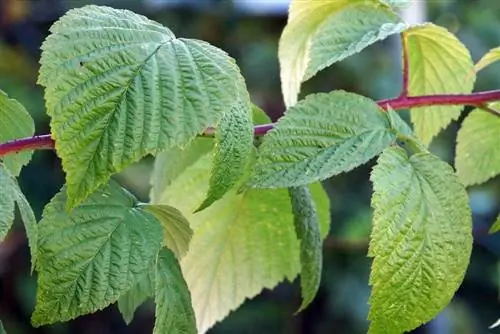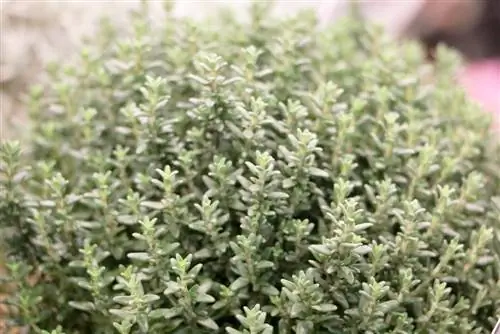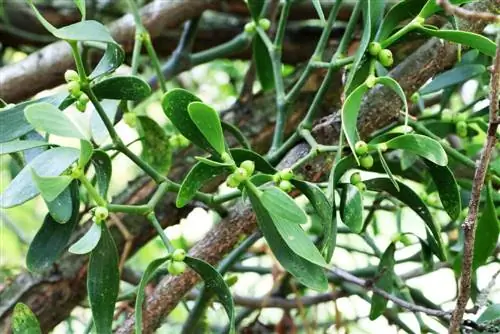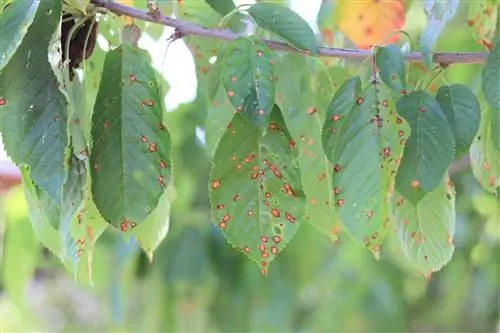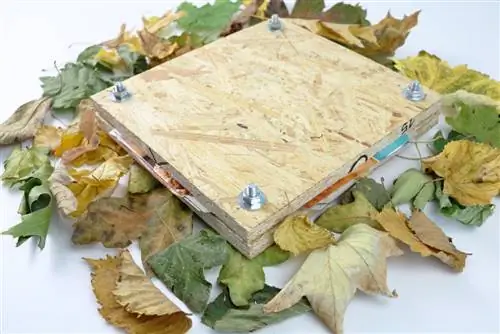- Author admin [email protected].
- Public 2023-12-17 03:39.
- Last modified 2025-01-24 12:45.
Raspberry leaf tea not only has a pleasant taste, it can also be mixed wonderfully with other types of tea and is also used in herbal medicine. If you would like to harvest, dry and prepare raspberry leaves yourself, you will find out below what you should pay attention to - and when you should not drink the tea due to its effects.
Harvest
The raspberry leaves for tea infusion can in principle be harvested all year round. However, the most aromatic result can be achieved with young, light green raspberry leaves. However, there are two options available for harvesting. Individual leaves can be removed from the bush or entire branches can be harvested. Harvesting individual leaves is a little more complicated, but they can be dried more quickly. Branches can be separated quickly and easily, but drying takes a little more time.
Tip:
For raspberry bushes with thorns, appropriate protective gloves should be worn to avoid injury to the hands.
Cleaning
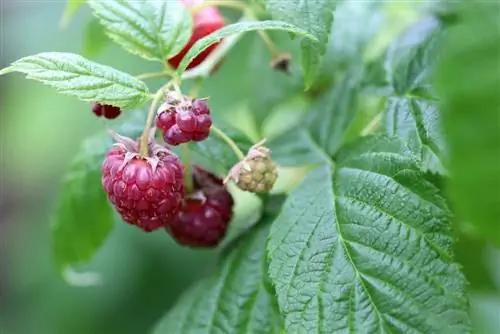
Dust, soil, insects and their remains can be found on the raspberry leaves. For this reason, they should be washed thoroughly before drying. If it is a raspberry with spines, it is advisable to first remove the stems from the leaves. So that the leaves can dry as quickly as possible despite washing, they can be removed from excess liquid in a salad spinner. Alternatively, you can put them in a clean cloth and spin them out.
Drying
When drying the raspberry leaves, it is crucial whether only individual leaves or entire branches were harvested. The following procedure is recommended for the individual sheets:
- Wash the leaves as described and pre-dry them by spinning or dabbing to remove as much excess liquid as possible.
- Loosen the raspberry leaves and spread them out on a net, a close-meshed grid or a linen cloth.
- Put in an airy, sunny and warm place to dry. Protect from rain and wind.
- The leaves should be checked daily until dry and ideally turned. This prevents the spread of mold and rot and promotes even drying.
- Drying is complete when the leaves break and crumble under light pressure.
An alternative to this procedure is drying them in a dehydrator, especially for loose leaves for raspberry leaf tea. To ensure that the vitamins are preserved to the greatest extent possible, this process should take place at 20 to 30 °C. This type of drying is also possible in the oven with circulating air, but ovens usually only allow a minimum temperature of 50 °C. A loss of vital substances must therefore be expected here.
If branches have been harvested, however, they can be tied together loosely and hung up in an airy manner. In this case, too, care should be taken to ensure that neither mold nor rot can form and that the leaves dry completely. These results are best achieved if the hanging branches are cut to different lengths and are not tied together too tightly. They should also be hung in a well-ventilated and dry area.
Tip:
Alternatively, they can be dried in a dehydrator or the oven.
Store
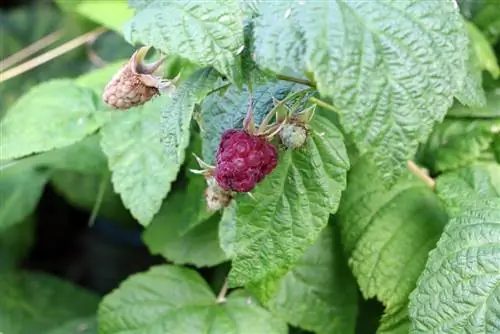
Before storing the raspberry leaves for raspberry leaf tea, they must be completely dried. As mentioned, this means a crumbly and brittle consistency. The leaves should break even under light pressure. If they still feel flexible, they contain too much moisture and could form mold during storage. When it comes to storage, the following points are also important:
- Store leaves airtight to preserve the aroma
- Avoid exposure to sunlight to reduce the decay of vital substances
- Keep storage container cool to prevent decomposition due to heat
Tip:
Ceramic or glass vessels that are kept cool and dark are well suited.
Prepare
One to two finely crumbled teaspoons of raspberry leaves are required for a cup of tea. The preparation proceeds as follows:
- Crumble the raspberry leaves and measure out one to two teaspoons.
- Bring water to a boil.
- Pour boiling water over the raspberry leaves and cover the container.
- Depending on the desired intensity, a steeping time of five to ten minutes is required.
Tip:
The raspberry leaf tea can also be combined with herbal teas or blackberry leaf tea.
Be careful during pregnancy
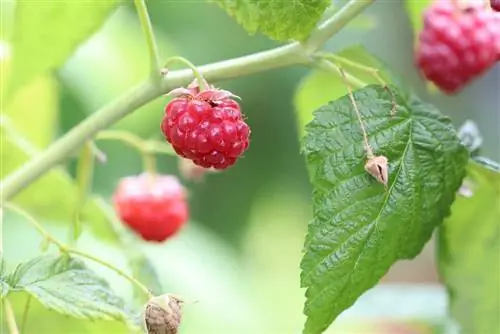
Raspberry leaf tea contains tannins in addition to the vitamins already mentioned. These substances can inhibit bacteria and reduce inflammation as well as contribute to the supply. However, raspberry leaf tea also relaxes the muscles, which is why it is used in herbal medicine during birth preparation, among other things. Because the muscles are loosened up, contractions can begin early. For this reason, raspberry leaf tea should only be drunk during pregnancy when the due date is approaching. Even then, advice from a midwife and doctor should be sought beforehand so as not to take any unnecessary risks.
Tip:
Women with heavy menstrual bleeding should only be used after consulting a doctor, otherwise the bleeding may increase again.

